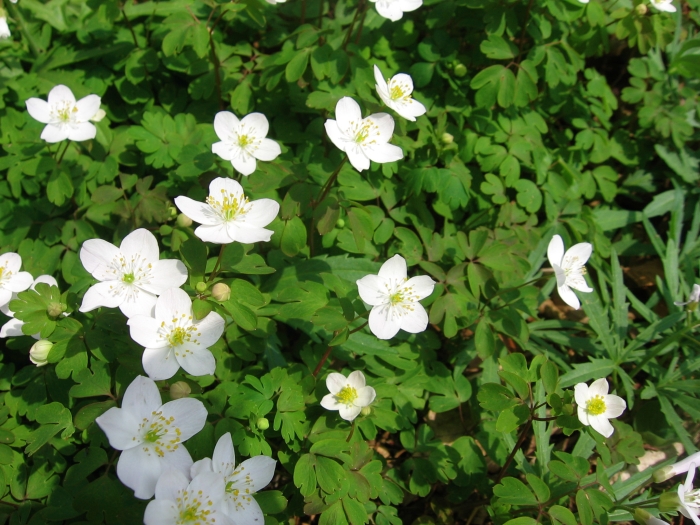Eastern False Rue Anemone
(Enemion biternatum)
Eastern False Rue Anemone (Enemion biternatum)
/
/

Lgalbi
Public domain
Image By:
Lgalbi
Recorded By:
Copyright:
Public domain
Copyright Notice:
Photo by: Lgalbi | License Type: Public domain | License URL: https://creativecommons.org/public-domain/ | Uploader: Lgalbi | Publisher: Wikimedia Commons | Title: False_Rue_Anemone.jpg | Notes: |







































































Estimated Native Range
Summary
Enemion biternatum, commonly known as Eastern False Rue Anemone, is a deciduous perennial herb native to rich, deciduous woodlands and floodplain forests in the Central and Eastern United States. This plant is a spring ephemeral, meaning it emerges early in the spring and goes dormant by late spring or early summer after seed ripening. It typically grows to a height of 0.5-0.8 feet (15-24 cm) and a width of 0.3-0.5 feet (9-15 cm). Eastern False Rue Anemone features delicate white flowers with numerous stamens in the center, blooming in early to mid-spring. The flowers are moderately showy and attract early-season pollinators.
Eastern False Rue Anemone is valued for its early spring flowers and its ability to form dense colonies over time, which can serve as an attractive ground cover in shaded garden areas. It is often used in woodland gardens, shade gardens, and native plant gardens. It requires consistently moist soil with good drainage and thrives in dappled to part shade conditions. While generally low-maintenance, it can be susceptible to leaf spot diseases in overly wet conditions. This plant is not known for aggressive roots or significant pest problems. It is important to note that it may go unnoticed when dormant, so careful planning is needed to ensure garden interest throughout the growing season.CC BY-SA 4.0
Eastern False Rue Anemone is valued for its early spring flowers and its ability to form dense colonies over time, which can serve as an attractive ground cover in shaded garden areas. It is often used in woodland gardens, shade gardens, and native plant gardens. It requires consistently moist soil with good drainage and thrives in dappled to part shade conditions. While generally low-maintenance, it can be susceptible to leaf spot diseases in overly wet conditions. This plant is not known for aggressive roots or significant pest problems. It is important to note that it may go unnoticed when dormant, so careful planning is needed to ensure garden interest throughout the growing season.CC BY-SA 4.0
Plant Description
- Plant Type: Herb
- Height: 0.5-0.8 feet
- Width: 0.3-0.5 feet
- Growth Rate: Moderate
- Flower Color: White
- Flowering Season: Spring
- Leaf Retention: Deciduous
Growth Requirements
- Sun: Part Shade
- Water: Medium
- Drainage: Medium
Common Uses
Low Maintenance, Water Garden
Natural Habitat
Rich, deciduous woodlands and floodplain forests
Other Names
Common Names:
Scientific Names: , Isopyrum biternatum, Enemion biternatum, Isopyron biternatum, Isopyrum biternatum f. acutilobum,
GBIF Accepted Name: Enemion biternatum Raf.